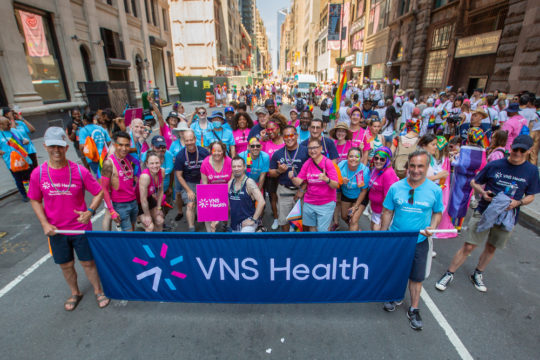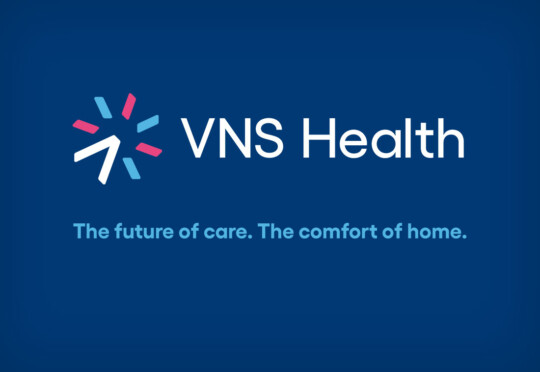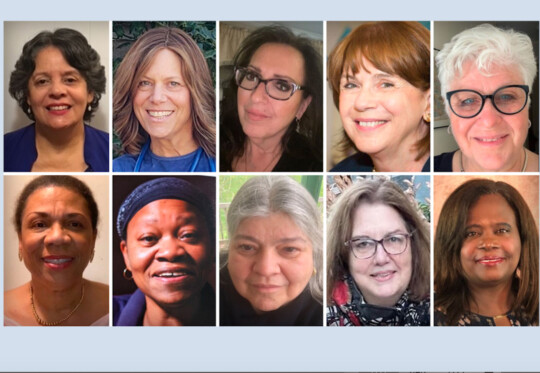Legendary Nurse Marilyn Liota Looks Back on Six Decades at VNSNY—Part 1: The 1950s

Marilyn Liota with her dog Lily.
To celebrate VNSNY’s 125th anniversary, Frontline VNSNY recently spoke to legendary former VNSNY nurse, Marilyn Liota. For those of you who may not know Marilyn, she was an amazing nurse who started her career with VNSNY in 1952. Over the next decades, Marilyn, who retired in 2012, rose from a field nurse to become the Regional Administrator and Vice President for Home Care in Queens. During this time, Marilyn saw incredible changes, both in New York City’s patient population and at VNSNY.
Over the next few weeks, Frontline VNSNY will be publishing a four-part reminiscence by Marilyn of her fascinating time at VNSNY.

Marilyn Liota in 1948, during the time she was in nursing school.
And now… let Marilyn walk you through the first decade of her six decades working as a nurse and nurse manager, proudly wearing the logo of the Visiting Nurse Service of New York.
VNSNY in the 1950s: A Neighborhood Organization Focused on Basic Care
Today, at age 89, former longtime VNSNY staff member Marilyn Liota resides happily in a continuing care residential community in Exeter, New Hampshire. Her former home, 260 miles to the south, is never far from mind, however. “The place I’m living in is one of the best facilities in the country—I researched it online!” she says. “I’m extremely active on the education, music and health committees. Many of the people here are in their late 90s or their 100s, so I’m one of the younger people. It’s a wonderful place, on a nature preserve with a beautiful view—but I do miss the diversity of New York City.”

Marilyn on the day of her nursing school graduation, June 6, 1951.
When Marilyn first began working as a field nurse for the Visiting Nurse Service of New York in 1952, VNSNY’s nurses were still all-purpose caregivers to the city’s vulnerable families, much like when Lillian Wald launched the agency six decades earlier. “In the 1950s, there was no specialization—public health nurses had to know everything,” she recalls. As in Lillian’s day, Marilyn and her colleagues served a sizeable immigrant population. “My grandparents came to the U.S. from Italy, and I’ve always been very connected to New York City’s immigrants,” she says. “I loved working on the Lower East Side for this reason. Starting out as a field nurse, I remember going into the tenements and looking at the names on the mailboxes and discovering that each building was home to a different ethnic group. It was fascinating to care for people from all those different cultures. I learned a great deal from them.”
Marilyn recalls her earliest years at VNSNY vividly. “My husband was a professional musician, and during those first several years I would travel part of the year on his concert tours and work at VNSNY the rest of the time,” she notes. “As a result, I worked in many different neighborhoods—Harlem, Kips Bay, Tremont, and areas in the Bronx where I’d never worked before. It was a great experience, because each area had its own unique features.”

Marilyn, front right, and two of her VNSNY colleagues in the 1950s.
At the time, VNSNY had 15 district offices across New York City, providing a neighborhood presence that reflected Lillian Wald’s original model of local engagement. Besides assisting area residents with health issues, the local offices, led by their supervisors, also played an important role in developing and maintaining community resources. “Because we were housed in the community, we were expected to work with community neighborhood groups to support and found community services and participate in health fairs,” notes Marilyn. “I was active with many groups. In Astoria, Queens, for example, I worked to establish a community mental health center that survived for many years until it finally closed in 2016.”
Marilyn remembers receiving a visit from an especially notable community member one Sunday morning in VNSNY’s Flushing office. “It was Dorothy Height, who is sometimes known as the godmother of the women’s movement for her work for women’s rights,” she says. “For four decades, Dorothy led the National Council of Negro Women and was a leading figure in the 1963 March on Washington, but she began her career as an educator in New York City. She was there to seek my help in establishing a community outreach program for pregnant women and children in Jamaica, Queens.”
In addition to the diversity of the city’s local communities, Marilyn quickly became acquainted with the evolving nature of modern health care. “When I began working on the Lower East Side, for example, we used to give injections of mercurial diuretics to people who had congestive heart failure,” she says. “Then better drugs were developed that could be administered without injections, and that whole caseload disappeared.”

A nurse helps a young child learn to use crutches.
Marilyn’s early career also coincided with the last years of the polio epidemic. In 1950, after VNSNY took over the forerunner of the Children’s Aid Society, the agency added a single physical therapist to each district office. “I had quite a few children who had polio and needed treatment,” says Marilyn. “The physical therapist would visit the patient and set up a treatment plan, then teach the nurses to carry it out. We called it rehabilitation nursing—known today as restorative nursing—because nurses weren’t supposed to practice physical therapy, but we were allowed to help patients carry out exercises they’d been prescribed to do on their own. Our patients had these machines that looked like small washing machines. We would heat cut-up wool in them, wrap the patient’s body in hot wool and towels to relax the muscles, then exercise the muscles to keep them from contracting. The children would be more comfortable afterwards, and often there would be some improvement in their condition.”

A VNSNY nurse checks the contents of her nurse’s bag in 1952.
Following the introduction of an effective vaccine in the mid-1950s, polio swiftly became a thing of the past. Pre-packaged sterile dressings were another welcome invention of that era. “When I began, we had to create our own sterile dressings,” says Marilyn. “We had volunteers who would tear up clean bedsheets, package them and send them to VNSNY’s district offices. We’d then bring these packets to the patients’ homes and bake them in the oven along with a potato. When the potato was cooked, the dressings were supposed to be sterilized.”
Another important development of the late 1950s was the advent of disposable syringes. “Before that, we instructed patients to boil their own syringes and leave them in a covered pan until the nurse’s visit,” Marilyn recalls. “We had quite a few diabetics that we’d visit daily to give insulin injections. On weekends, I would boil syringes at home, put them into a cylinder that was sterilized, and carry them to my patients to give them their insulin.”
To augment its services, VNSNY utilized “friendly visitors” during this time—volunteers who would visit patients identified by the agency’s nurses as needing companionship. The agency also had contracts to provide maternal health advice to pregnant policy-holders of the Metropolitan Life Insurance Company and do checkup calls on Daily News staffers who had been sick for an extended period. “This was a precursor to today’s occupational health nursing, in which large companies now provide their own health support for employees,” notes Marilyn. The local VNSNY offices held parenting classes for expectant mothers and fathers in their districts, as well. For Marilyn, however, the single most memorable vestige of the 1950s was the method visiting nurses used to weigh infants. “When we visited mothers and their newborns, we would use a butcher’s scale to weigh the babies,” she says. “We’d put the baby in the middle of a cloth diaper, tie baby and diaper to the butcher scale, and weigh the baby suspended in midair like you’d weigh fish.” They stopped using that technique early on, adds Marilyn—“but when I finally turned in my nurse’s bag, I still had the scale in it!”
To read Part 2: The 1960s in our Marilyn Liota series, please click here.


